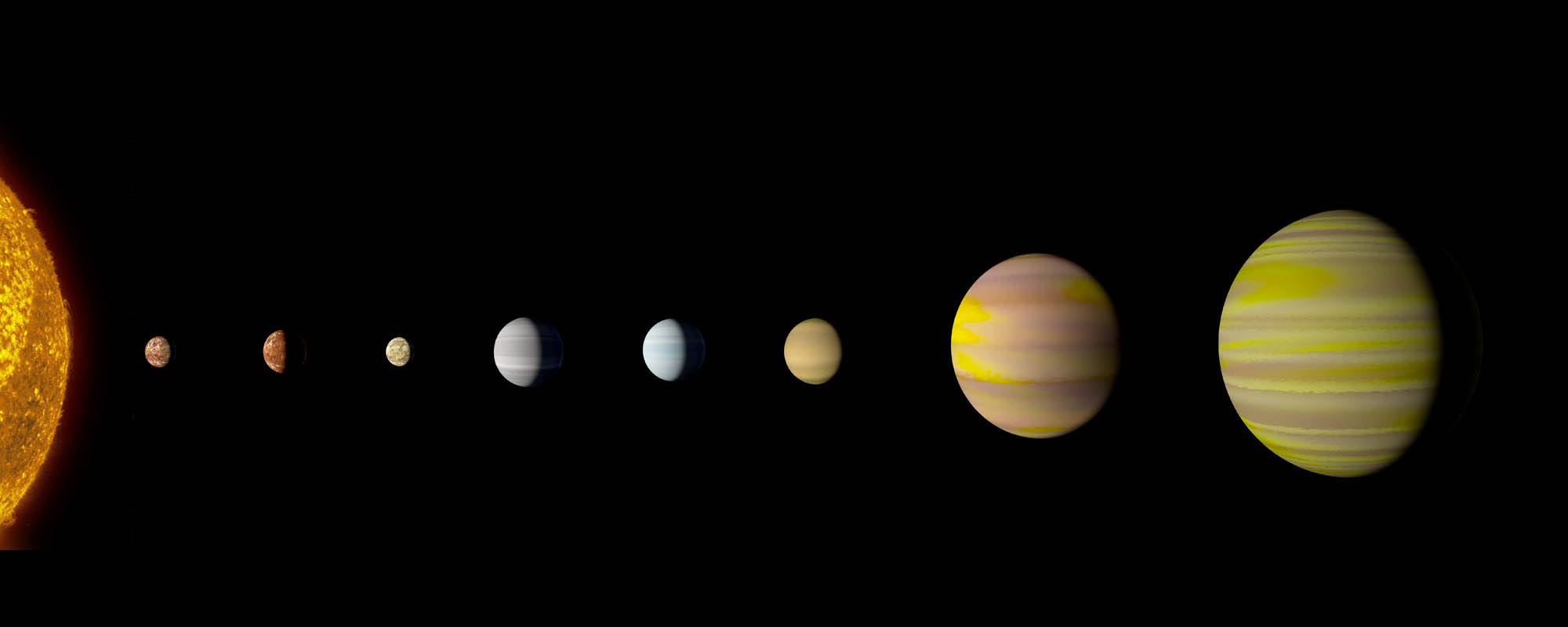You Can Hunt for Alien Planets in Kepler Data Using Newly Released Google Code

You can try your hand at advanced exoplanet hunting, thanks to some newly released code.
In December, a pair of researchers announced that they'd discovered two alien planets in the archival data gathered by NASA's prolific Kepler space telescope, using Google machine-learning techniques based on the network of neurons in the human brain.
Those techniques are now available to the public. [Images: Discovery of 8th Planet in Kepler-90 System with Google AI]
"Today, we're excited to release our code for processing the Kepler data, training our neural network model and making predictions about new candidate signals," Google senior software engineer Chris Shallue, the lead author of that December discovery study, wrote in a blog post Thursday (March 8).
"We hope this release will prove a useful starting point for developing similar models for other NASA missions, like K2 (Kepler's second mission) and the upcoming Transiting Exoplanet Survey Satellite mission," Shallue added.
You can find the code, as well as instructions about how to use it, on GitHub.
Kepler finds alien worlds by detecting the tiny brightness dips caused when they pass in front of, or "transit," their host stars from the spacecraft's perspective. Mission scientists use automated software to flag the most promising of these dimming events, and then investigate these candidates manually to see if they are indeed evidence of planets. (False positives can result from a variety of phenomena, such as the passage of a companion star in front of the star of interest.)
Get the Space.com Newsletter
Breaking space news, the latest updates on rocket launches, skywatching events and more!
That initial culling stage is a necessity, given the enormity of Kepler's data set. But, as that December study showed, it means some intriguing worlds may have slipped through the detection cracks. Indeed, one of the worlds found by Shallue and his co-author, University of Texas astronomer Andrew Vanderburg, is the eighth planet in the Kepler-90 system, which lies 2,545 light-years from Earth. Before that find, our solar system was the only one known to harbor as many as eight planets.
"It's possible that some potentially habitable planets like Earth, which are relatively small and orbit around relatively dim stars, might be hiding just below the traditional detection threshold — there might be hidden gems still undiscovered in the Kepler data!" Shallue wrote in the blog post.
And there has been a lot of opportunity for planets to slip between the cracks. Shallue and Vanderburg spotted the two newly discovered exoplanets after analyzing Kepler observations of just 670 stars. The spacecraft studied about 150,000 stars during its primary mission, from 2009 through 2013, and has looked at thousands more during the K2 phase. (The primary mission ended when the second of Kepler's orientation-maintaining reaction wheels failed. K2 involves planet hunting on a more limited basis, as well as observations of a variety of cosmic objects and phenomena.)
Reminder: You can also hunt for exoplanet-induced brightness dips the old-fashioned way — by eye — at PlanetHunters.org.

To date, Kepler has discovered more than 2,500 exoplanets — about two-thirds of all known alien worlds. And the spacecraft's observations have revealed that rocky, potentially life-supporting planets are tantalizingly common throughout the Milky Way. For example, about one in five sunlike stars hosts a roughly Earth-size world in the habitable zone, the range of distances at which liquid water could likely exist on a planet's surface.
And another NASA planet hunter will soon take to the skies. The Transiting Exoplanet Survey Satellite (TESS), which Shallue referenced in his blog post, is scheduled to lift off next month. Like Kepler, TESS will use the transit method. But the new mission will focus on finding worlds around stars close to the sun, whereas Kepler's gaze was directed much farther afield during its primary mission.
Follow Mike Wall on Twitter @michaeldwall and Google+. Follow us @Spacedotcom, Facebook or Google+. Originally published on Space.com.
Join our Space Forums to keep talking space on the latest missions, night sky and more! And if you have a news tip, correction or comment, let us know at: community@space.com.

Michael Wall is a Senior Space Writer with Space.com and joined the team in 2010. He primarily covers exoplanets, spaceflight and military space, but has been known to dabble in the space art beat. His book about the search for alien life, "Out There," was published on Nov. 13, 2018. Before becoming a science writer, Michael worked as a herpetologist and wildlife biologist. He has a Ph.D. in evolutionary biology from the University of Sydney, Australia, a bachelor's degree from the University of Arizona, and a graduate certificate in science writing from the University of California, Santa Cruz. To find out what his latest project is, you can follow Michael on Twitter.









